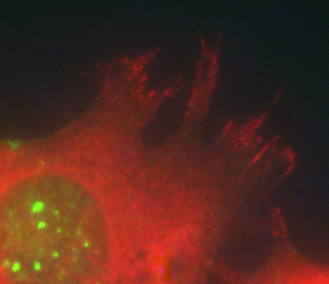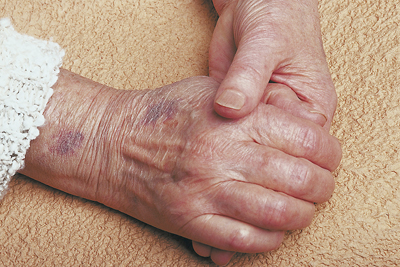 Àngels López
Àngels López
“Científicos españoles reproducen en el laboratorio la pérdida de neuronas que da lugar a la enfermedad de Parkinson” (Eng)
![]() Last week’s press release about the Control of Stem Cell Potency group’s discovery of disease-specific phenotypes in induced pluripotent stem cells from Parkinsons patients was covered by several newspapers, magazines and websites. These included daily business newspaper El Economista, online science magazine Tendencias 21, and Europapress, the major national news agency.
Last week’s press release about the Control of Stem Cell Potency group’s discovery of disease-specific phenotypes in induced pluripotent stem cells from Parkinsons patients was covered by several newspapers, magazines and websites. These included daily business newspaper El Economista, online science magazine Tendencias 21, and Europapress, the major national news agency.
EU funding for research into Alzheimer’s and prioniopathies
A project involving IBEC through its affiliation with CIBERNED has been approved by the EU for funding.
Microscope development project for sub-surface imaging at the nanoscale
IBEC’s Nanoscale Bioelectrical Characterization group, headed by Gabriel Gomila, is a partner in a new EU-funded collaborative project set to develop a new tool for non-destructive 3D nanoscale structural characterization, the Volumetric Scanning Microwave Microscope (VSMM).
“Bionanotecnologías: pautas hacia la excelencia”
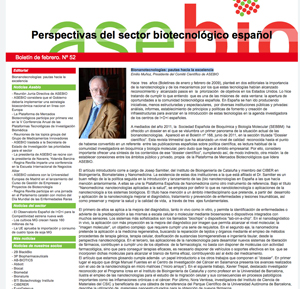 In their bulletin for February, the Spanish Association of Biotechnology Companies (ASEBIO) published an editorial by the president of their scientific committee Emilio Muñoz, about the impact of bionanotechnology in Spain and guidelines for the future.
In their bulletin for February, the Spanish Association of Biotechnology Companies (ASEBIO) published an editorial by the president of their scientific committee Emilio Muñoz, about the impact of bionanotechnology in Spain and guidelines for the future.
A breakthrough in understanding age-related disease
 Researchers at IBEC have made an important leap towards understanding the second most common neurodegenerative illness, Parkinson’s disease (PD), which affects around 5% of the population by age 85.
Researchers at IBEC have made an important leap towards understanding the second most common neurodegenerative illness, Parkinson’s disease (PD), which affects around 5% of the population by age 85.
Previously, it wasn’t clear whether induced pluripotent stem cells (iPSCs) – adult cells genetically reprogrammed to an embryonic stem cell-like state, which offer an unrivalled opportunity to understand many human diseases – were able to shed any light on illnesses which are age-related.
Developing a new solution to treat atherosclerosis
 We’ve all eaten rich meals or fatty foods and joked that we can feel our ‘arteries hardening’. However, the reality of atherosclerosis – when fat, cholesterol, and other substances build up in the artery walls and form solid structures called plaques – is no joking matter. The consequences of this disorder can include stroke and coronary artery disease, the leading cause of death in many developed countries.
We’ve all eaten rich meals or fatty foods and joked that we can feel our ‘arteries hardening’. However, the reality of atherosclerosis – when fat, cholesterol, and other substances build up in the artery walls and form solid structures called plaques – is no joking matter. The consequences of this disorder can include stroke and coronary artery disease, the leading cause of death in many developed countries.
Now, a new scientific project involving IBEC and three other European research centres is set to offer a novel, minimally-invasive treatment for atherosclerosis patients, thanks to funding awarded by the European Commission.
“Alícia Casals, Cap del grup de Robòtica a l’IBEC” (Eng)
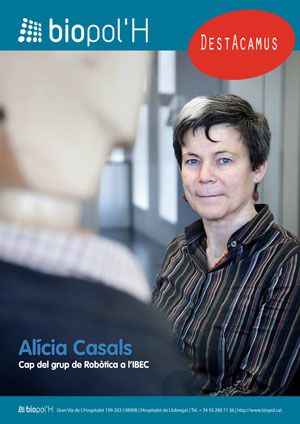 IBEC’s Robotics group leader Alícia Casals is the subject of the February 2012 edition of Destacamus, a bimonthly magazine published by Biopol’H which profiles researchers.
IBEC’s Robotics group leader Alícia Casals is the subject of the February 2012 edition of Destacamus, a bimonthly magazine published by Biopol’H which profiles researchers.
The classroom in the lab
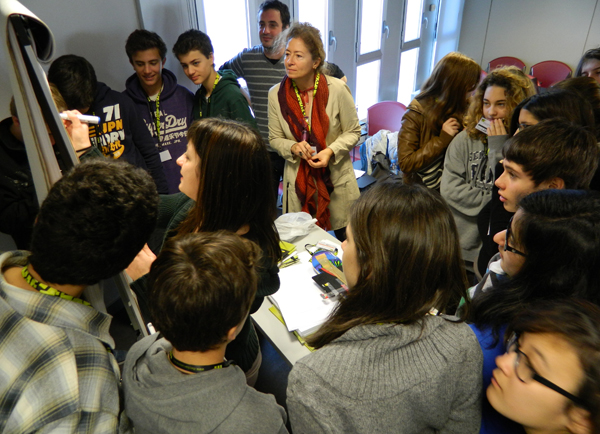 Last week, IBEC welcomed a group of third year E.S.O. students from the Oak House School in Barcelona, who were taking part in the ESCOLAB initiative of the City Council of Barcelona.
Last week, IBEC welcomed a group of third year E.S.O. students from the Oak House School in Barcelona, who were taking part in the ESCOLAB initiative of the City Council of Barcelona.
“Un chip implantado bajo la piel libera fármacos a voluntad”
![]() IBEC director and head of the Biomaterials for Regenerative Therapies group Josep Planell was quoted as an expert opinion last week in an article in La Vanguardia. The story covered a new chip developed at MIT able to release drugs under the skin while dosage and timing is controlled wirelessly.
IBEC director and head of the Biomaterials for Regenerative Therapies group Josep Planell was quoted as an expert opinion last week in an article in La Vanguardia. The story covered a new chip developed at MIT able to release drugs under the skin while dosage and timing is controlled wirelessly.

